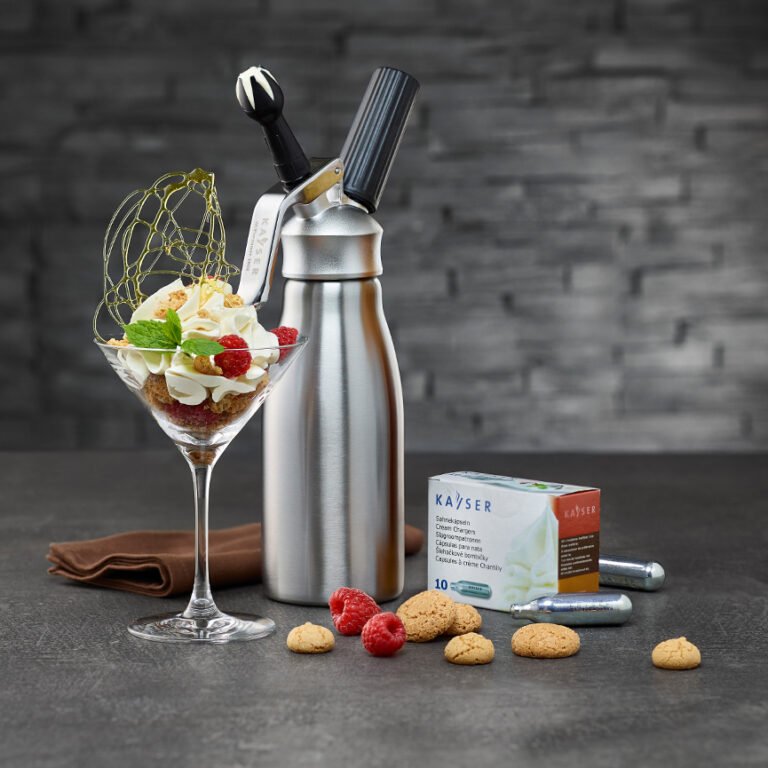Some buyers assume all cream chargers are the same—as long as they’re sealed. That’s a costly mistake.
Yes, gas purity matters. The difference between 99.0% and 99.995% pure N2O directly affects safety, flavor, equipment performance, and even customs clearance.

In this guide, I’ll explain what gas purity really means, why it matters, and how to verify it before you place an order—especially if you’re sourcing at scale or building a brand.
What Does “99.995% Pure N2O” Really Mean?
Many buyers don’t know what that number on the spec sheet really represents.
99.995% purity means that out of one million parts of gas, only 5 parts are impurities. These impurities might include oxygen, moisture, hydrocarbons, sulfur compounds, or residual oils.
[Image Placeholder]
Dive Deeper: Purity Breakdown Table
| Purity Grade | Total Impurities | Common Impurity Types |
| 100.00% | ≤ 50 ppm | Moisture, oxygen, hydrocarbons |
| 99.90% | ≤ 1,000 ppm | Water vapor, CO₂, trace nitrogen |
| 99.50% | ≤ 5,000 ppm | Noticeable oils, strong odors |
📌 Impurities at high ppm levels can react with whipped cream or metal cylinders, causing unwanted smells or corrosion.
Why Do Most Cream Charger Brands Claim 99.995% Purity?
If you check websites and tanks, everyone seems to promise the same number. Is it real?
99.995% purity has become the standard in Europe and Australia because of strict food safety laws and market expectations.
[Image Placeholder]
However, not every factory actually meets that spec. Some just print the number without lab verification.
- Reputable factories will provide a COA (Certificate of Analysis) showing exact ppm results.
- Look for suppliers that offer third-party lab tests or visible gas-grade markings on cylinders.
What Happens If You Use Lower-Purity N2O Gas?
It might look the same—but the consequences show up in performance and customer reviews.
Lower-purity gas can introduce moisture, oil mist, or chemical residues into your whipped cream, equipment, or kitchen air.
[Image Placeholder]
Dive Deeper: Risks of Lower Gas Purity
| Risk Type | Result |
| Moisture in gas | Can cause mold in cream, shortens shelf life |
| Hydrocarbons | Add a plastic or metallic taste |
| Sulfur compounds | Corrosive, may damage siphon seals |
| Oil aerosols | Clog valves, reduce discharge efficiency |
📌 In EU markets, residue left by low-purity gas can be grounds for product recalls.
Does Higher Purity Make a Visible Difference in Cream Output?
It’s not just chemistry—it’s what your customers taste and see.
Higher purity gas leads to more stable foam, longer-lasting peaks, and less leftover cream or gas inside the siphon.
[Image Placeholder]
Dive Deeper: Performance Differences at a Glance
| Performance Metric | 99.995% Purity | 99.9% Purity | 99.5% Purity |
| Foam Stability | High | Moderate | Low |
| Mouthfeel | Clean & neutral | Slightly off | Noticeably oily |
| Residue in Siphon | Minimal | Medium | High |
| Valve Blockage Risk | Very low | Moderate | High |
📌 In professional kitchens, consistency matters. You don’t want to lose an entire batch to poor gas.
Which Purity Level Should You Choose Based on Your Application?
Not all use cases require ultra-pure gas—but some absolutely do.
Choose based on local laws, brand positioning, and final use case.
[Image Placeholder]
Dive Deeper: Purity Recommendation by Scenario
| Use Case | Recommended Purity | Why |
| Café & Restaurant | ≥99.995% | Safety, customer trust, taste |
| Retail Sales | ≥99.995% | Regulatory compliance, repeat orders |
| Home DIY | 99.9%+ | Acceptable if not resold |
| Party/Entertainment | 99.9%+ | Odor and taste still matter |
| OEM White Label | ≥99.995% | Long-term brand reputation protection |
📌 Some countries legally require high-purity food-grade gas (e.g., EU), while others leave it to importer discretion.
How Can You Verify the Gas Purity from a Supplier?
Don’t rely on stickers or catalog text. Ask for proof.
The safest approach is to request a COA with gas chromatography results, and ensure each batch matches what’s promised.
[Image Placeholder]
Dive Deeper: Gas Purity Verification Checklist
| Method | What to Ask For |
| COA (Certificate of Analysis) | Must show ≥99.995% with detection method |
| MSDS Document | Should mention impurity levels & safety |
| Lab Report (Optional) | Best if from third-party institution |
| On-tank Markings | Look for printed batch code, not sticker |
| Factory Stamp or TUV Logo | Adds extra credibility |
📌 Want to see what a real gas COA looks like? Click here to view our latest example →
Conclusion
Don’t let your brand or business suffer from invisible impurities. Gas purity isn’t just a number—it’s a key factor in performance, compliance, and customer satisfaction.
Use this guide to choose smarter, check thoroughly, and always ask for real proof.




